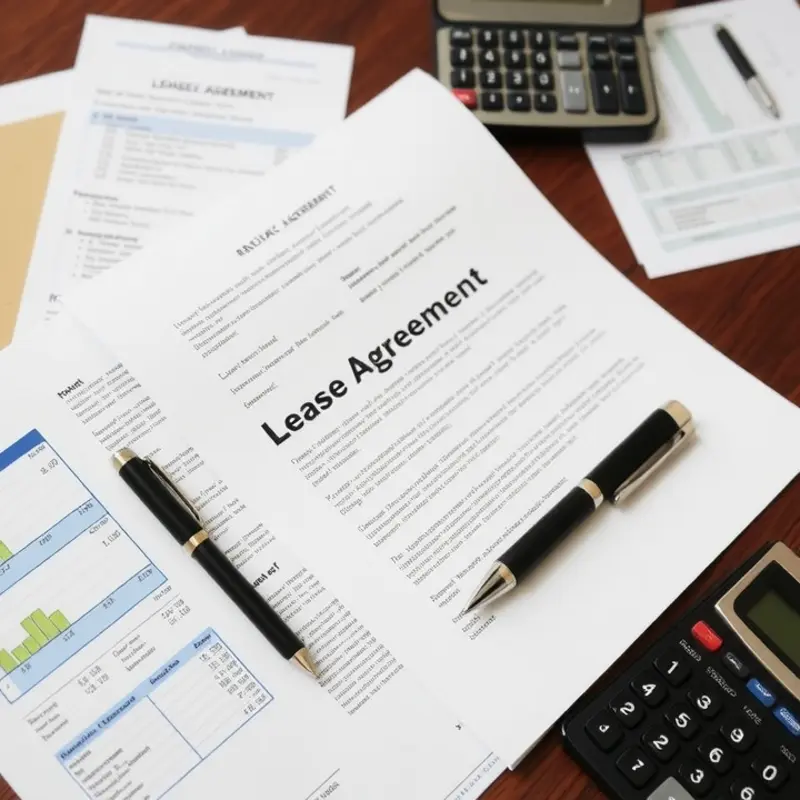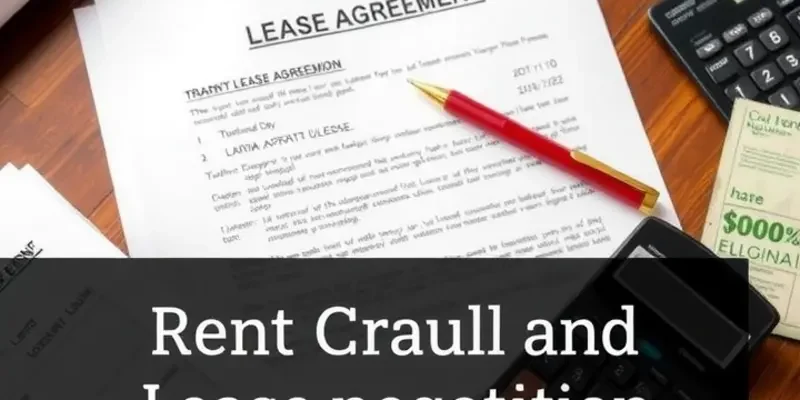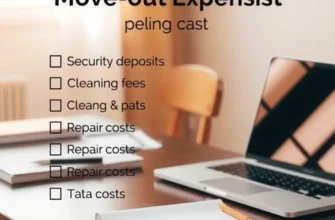Renting can be one of the most significant financial decisions you’ll make, particularly for young professionals, first-time renters, students, couples, and families. With the rental market continually evolving, understanding how to navigate lease agreements, maintain a budget, and ensure you’re getting the best value is crucial. Considering that rents are often among the largest single expenses in a household’s budget, it’s essential to have financial clarity. This guide will empower you with practical tips and insights into the renting landscape, helping you make informed decisions and confidently fulfill your housing needs. From lease negotiations to budgeting for additional costs, we’ve got you covered, ensuring you enjoy the comforts of your new space without financial stress.
Understanding Your Lease: Key Inclusions and Negotiations

Signing a lease is a significant step in the rental journey, demanding attention and scrutiny. A lease agreement establishes the terms and conditions of your tenancy, serving as your primary legal protection. Therefore, it’s crucial to understand its key inclusions and potential negotiation points.
One of the primary elements to examine is the rental term. Leases can be short-term or long-term, each with distinct advantages. For a comprehensive discussion on this, consider viewing this guide on pros and cons of short-term leases.
Next, keep an eye on the rent amount and payment details. Verify the monthly rent, due date, and acceptable payment methods. Also, note any associated fees, such as late payment charges. Ensure clarity on these financial obligations to avoid future conflicts.
The security deposit is another critical element. The lease should clarify the deposit amount, conditions for deductions, and the timeframe for its return. Laws concerning security deposits vary by location, so understanding local regulations can prevent unwarranted deductions.
The lease should specify the maintenance responsibilities of both tenant and landlord. It should outline who handles specific repairs and general maintenance tasks. Clarity in this section can mitigate disputes later, especially concerning repair timelines.
Pay close attention to the policy on alterations. Many leases restrict significant changes, such as painting or structural modifications. If you foresee the need for alterations, seek permission in writing beforehand and have it included as an addendum.
Review the subletting policy. Some landlords allow subletting, while others impose strict bans. This is crucial if you plan to live elsewhere temporarily or if you need to break the lease early.
Lease renewal or termination clauses are important as well. Understand the notice period required for ending the tenancy, and any conditions under which the landlord might terminate the lease. This knowledge is vital for planning future accommodations.
Once you’ve understood the lease terms, you can move to negotiations. Begin by identifying areas where terms could be more favorable. Negotiating rent is often possible, especially if you demonstrate good credit or stable income. In a competitive market, landlords might offer rent reductions for long-term tenancy commitments.
For recurring charges like parking fees or pet fees, see if there’s room for negotiation. Often, landlords might consider waiving these in exchange for timely rent payments or a longer lease.
If you notice any outdated terms or excessive fees, use comparable rental agreements from similar properties as leverage. Demonstrating awareness of the market puts you in a better position during discussions.
Ultimately, whether it’s for a specific provision or the overall agreement, enter negotiations respectfully. Be clear about your reasons, backed by market research. With patience and clear communication, you can often secure better terms that benefit both parties.
Budgeting Beyond Rent: Hidden Costs to Consider

When renting a new home, the monthly rent often appears to be the most substantial and apparent expense. However, many renters overlook the array of hidden costs that can stretch their budgets. To build a comprehensive and realistic budget, it’s essential to understand and account for these additional expenses.
Security Deposits and Application Fees
Renting typically requires a security deposit, often equivalent to one or two months’ rent. This deposit is refundable, but be prepared for potential deductions for repairs or cleaning. Additionally, application fees for background and credit checks are common. Allocating funds for these initial outlays will prevent unwelcome surprises.
Utilities and Services
Utility costs, such as electricity, water, and gas, can vary significantly depending on your living situation and location. Investigate whether any utilities are included in your rent. If not, check average costs in your area to estimate your monthly expenses accurately. Don’t forget internet and phone services, which can quickly add up.
Tenant Insurance
While not legally mandated, tenant insurance is highly advisable. It covers your belongings in case of theft, fire, or other unforeseen events. The cost is relatively low compared to potential out-of-pocket expenses in the absence of coverage. Factor this into your monthly budget for peace of mind.
Maintenance and Repair Costs
While landlords generally handle large repairs, minor upkeep often falls to the tenant. Light bulbs, air filters, and small fixes might seem insignificant but can accumulate over time. A small, earmarked fund can cover these incidental expenses without disrupting your budget.
Look for Ways to Minimize Costs
Consider cost-saving strategies like sharing expenses when living with roommates or negotiating terms before signing a lease. To learn more about maintaining a harmonious living situation that might also cut costs, visit Renting with Roommates.
Transportation and Commuting
Living farther from work to save on rent can backfire with higher transportation costs. Budget for commuting expenses, whether it’s a transit pass, gas, or rideshares. Calculate these in relation to your rent to understand the true cost of your location.
Miscellaneous Costs
Don’t forget to include other potential costs, like parking fees, laundry services, or storage. These vary by location and property, so inquire and factor them into your calculations.
Creating a detailed budget encompassing all these elements ensures you’re financially prepared to meet expenses beyond just rent. Prepare a spreadsheet or use budgeting apps to monitor all incoming and outgoing funds, making sure nothing falls through the cracks. Prioritizing each expense category helps reinforce fiscal discipline and supports your financial stability while renting.
Final words
Successfully navigating the renting landscape requires diligence and foresight. By understanding lease agreements and budgeting comprehensively, you can avoid common pitfalls that lead to financial strain. With these insights, young professionals, students, couples, and families can approach renting with confidence, ensuring their homes are both comfortable and financially manageable. Take the time to review your rental obligations and budget, so you can enjoy your space without unexpected financial burdens.









